Looking for an East Africa packing list for an upcoming trip? Here’s everything I took on my own trip, along with packing tips and what to wear on safari.
East Africa is a spectacular part of the world. There’s so much diversity, from mountains to wildlife-filled savannahs, to forests and beaches.
But if you think about East Africa, I bet that the first thing that pops into your head is going on a bucket-list safari. Which can then lead to thinking about what to wear on safari. Khaki outfits, pith helmets, vests with a million pockets…?
Creating the perfect East Africa packing list doesn’t mean kitting yourself out like an adventurer or a 17th century explorer, but it does require some careful planning to ensure you’ve got a few essentials and you’re respectful of local cultures and religions.
After spending a month travelling around East Africa, here are my tips for what to wear in Tanzania, Uganda, Rwanda and Kenya (although Kenya wasn’t on my recent East Africa itinerary, I do have an excellent Kenya itinerary).
My trip was a mix of activities: a 3-day hike in Tanzania, gorilla trekking in Uganda, safaris, a multi-day bike ride along the Congo Nile Trail in Rwanda, visits to cities and beach time in Zanzibar.
This blog post may contain affiliate links, meaning if you book or buy something through one of these links, I may earn a small commission (at no extra cost to you).
Tips for packing for East Africa
Before we get into the details of what was on my ultimate Africa packing list, here are a few tips.
Packing tip #1: Choose comfy clothes
If you’re wondering what to wear on safari, it’s simple – comfortable clothes. You’re going to spend a lot of time sitting in a car, so I think the best clothes to wear on safari are super comfy items.
But that doesn’t mean sacrificing style! You can still wear fashionable clothes and be comfortable – and avoid looking like Dora the Explorer.
Packing tip #2: Pack light colours
Most East Africa packing list posts will tell you to avoid black clothing because they attract tsetse flies and mosquitoes. I’m not quite sure if that’s actually true, but the reason I was glad I didn’t bring dark clothing was because of the heat.
It gets hot sitting in a car on an African safari all day, and we all know that black clothes draw heat. I had a couple of black tops but most were lighter colours.
Pack light colours (khaki, grey, green) as well as fabrics that breathe and dry quickly. Avoid white clothes – it won’t take long to get dirty in the dust.
Packing tip #3: Be respectful with your clothing
The countries in East Africa all differ when it comes to culture and religion, so I like to dress appropriately. Avoid short shorts, skimpy tops and so on.
Wearing shorts and tank tops is fine on safari and in beach areas, but I’d avoid it in villages and cities.
For example, the majority of the population in Zanzibar is Muslim, so keep this in mind when packing and make sure you always have something you can throw around your shoulders and bare legs in Stone Town.
Packing tip #4: Don’t pack too much
This is advice I wish I’d taken myself! I ended up packing way too much stuff.
Packing light will make your trip so much easier. Plus, if you’re taking internal flights, there are usually weight limits (I had to pay for excess luggage on my flight to Zanzibar).
And don’t worry about running out of clothes: many lodges can do laundry overnight.
Bonus: If you want to download this packing list as a PDF guide that you can print, simply click here.
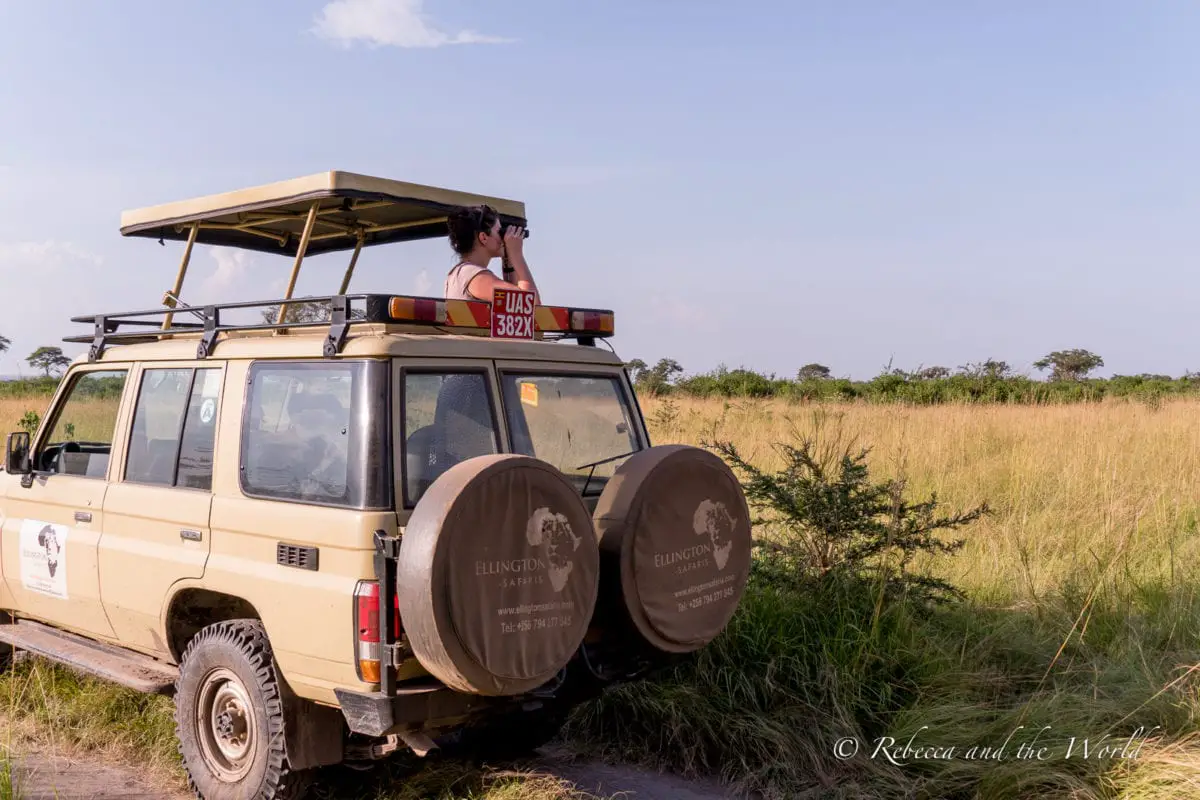
East Africa packing list
Here’s everything that was on my East Africa packing list – along with some extra thoughts on things I wish I’d brought with me, and stuff I should have left at home!
Keep in mind that my trip was a month long and was quite active, so you may not need as many changes of clothing as I packed. I mean, I didn’t even need this many!
I also have a guide specifically for what to pack for gorilla trekking, which outlines all the stuff you need to take for this incredible experience.
Luggage
Bag – I ummed and ahhed over what type of bag to bring with me. Small airlines don’t accept hardshell suitcases, but I also didn’t want to bring a backpack because I preferred to have something I could wheel.
In the end, I settled on a soft-sided suitcase with wheels (similar to this one below) that was perfect. The top unzips all the way around so I could easily access everything inside, and it has a separate zippered compartment on the bottom which was perfect for dirty shoes and stuff I didn’t access a lot. I could wheel it when I could, or pop it on back if needed.
- External grab handles for easy handling
- Locking pull handle
- End pockets for shoes and wet items
- Corner protectors guard against wear and tear at critical contact points
- Large u shaped main opening
Daypack – Bring a separate daypack that you can carry on the plane and also toss into your safari vehicle.
I took my husband’s GORUCK backpack with me because I wanted to be able to use my water bladder for hiking, and this backpack has a compartment for that.
If you’re not planning any hiking or major outdoor activities, a normal backpack will be fine. This Tortuga backpack is a game-changer. It’s got plenty of pockets, tonnes of space AND still counts as carry-on.
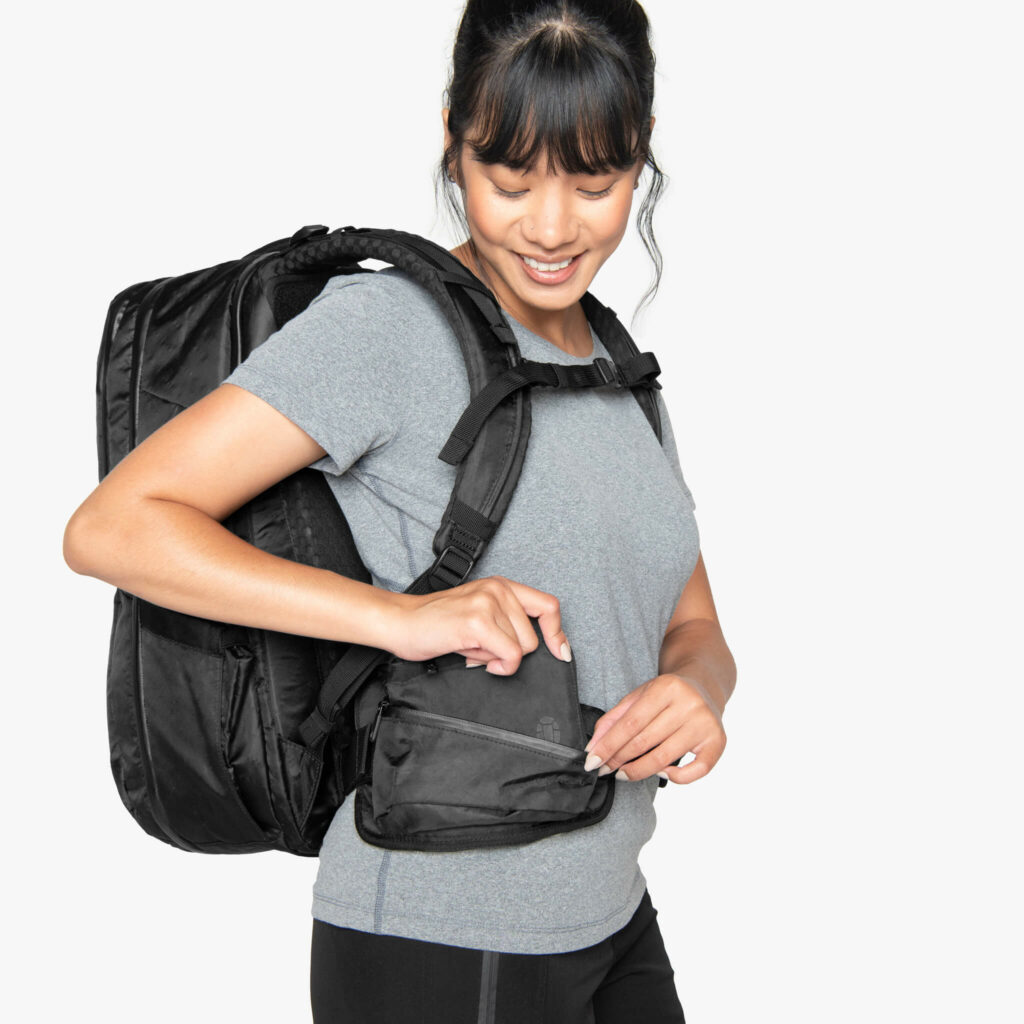
Small handbag – I also brought along a small handbag that could fit my camera, notebook and money when I was in cities or going to dinner each night at the lodge. It’s the white and black handbag in the picture below.
Packing cubes – If you don’t know about packing cubes by now, you’re missing out! These essential travel items help keep your bag organised. I took several Bagail packing cubes and had one for bottoms, one for tops, one for underwear/socks/bikini, and then another one for random odds and ends. It saves so much time rustling through your bag trying to find a specific item.
- Easy Travelling:Are you still worried about the chaos of packing for a trip? Introduce our packing cubes to join your travelling gear! They help to sort, organise and find items quickly. Let’s you start your trip with effortless organisation!
- Durable Fabrics: All packing cubes are made of 290D fabric. This fabric is strong and durable. We offer packing cubes with Precise internal stitching,smooth and durable zips for your everyday needs.
Reusable shopping bag – I always pack a foldable, reusable shopping bag. This is extra important in East Africa, because plastic bags are banned in many countries.
Bumbag – I packed this bumbag (that’s a fanny pack to Americans!) for my hikes and biking trip, so that I could easily access lip balm, hand sanitiser, my phone and other small items.
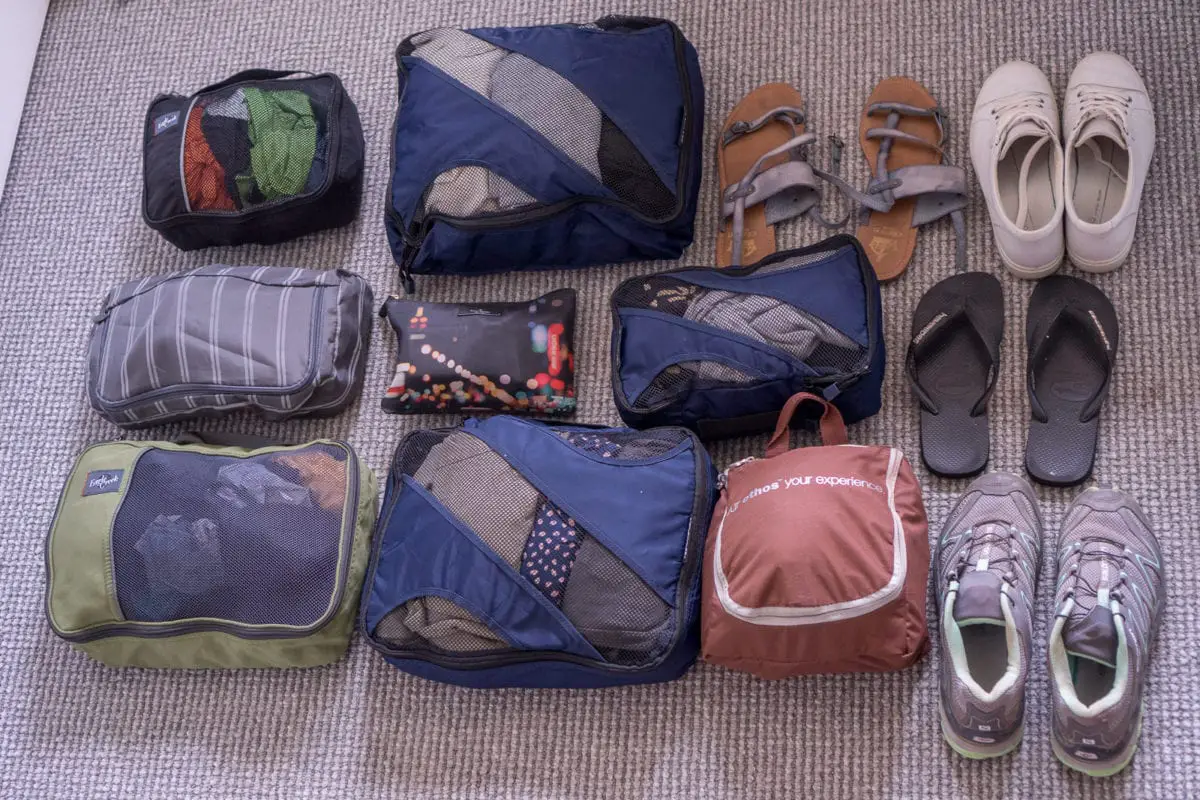
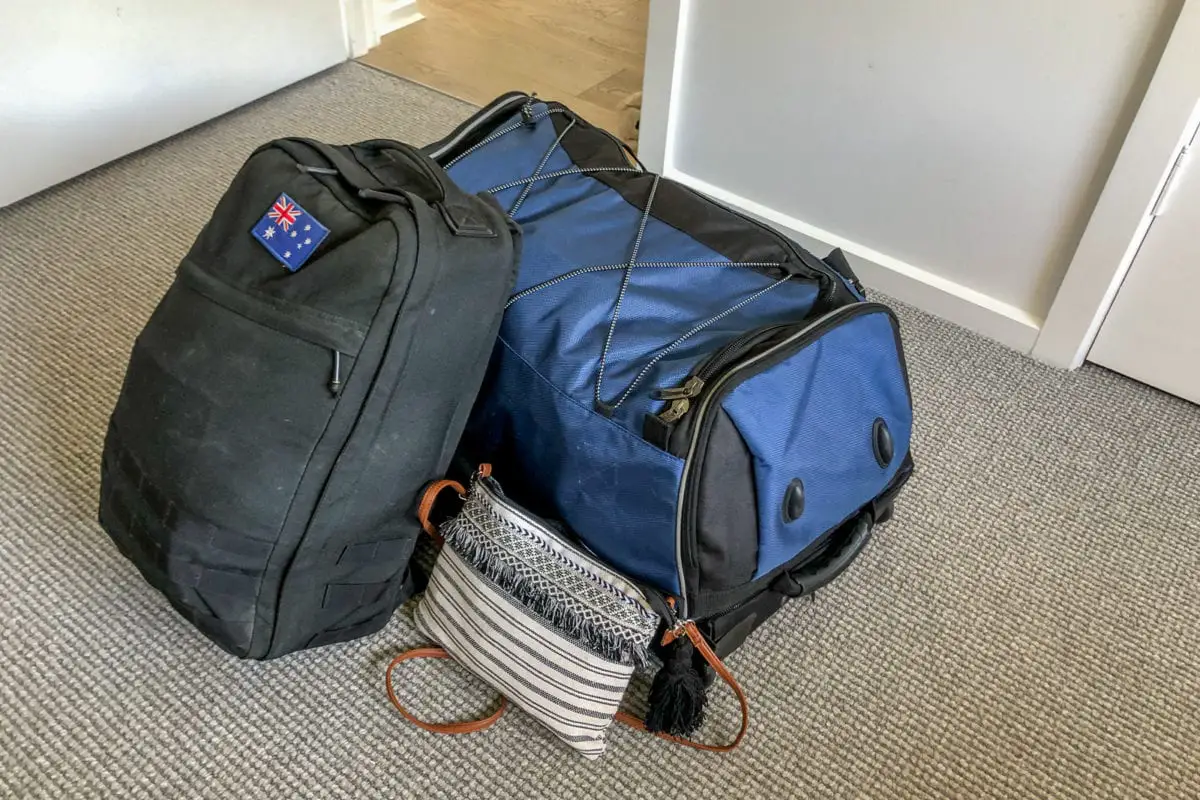
Pants
Pack 3 pairs of pants. I took a pair of lightweight joggers, black leggings and hiking pants (although I could have worn my leggings on the hikes).
Don’t even bother with jeans! I didn’t take mine and I didn’t miss them.
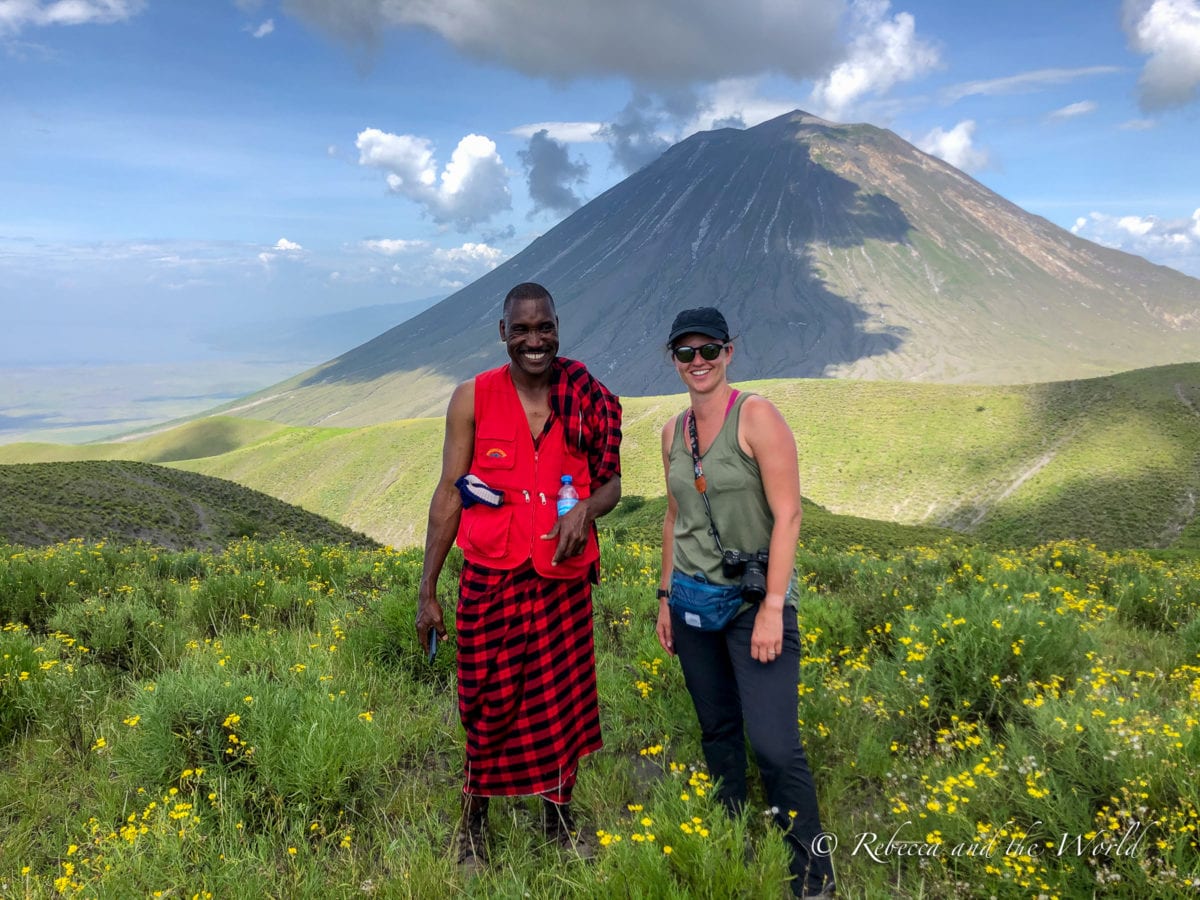
Skirts
Skirts were the best things on my women’s safari packing list!
I took two midi skirts with me and found them to be so much more comfortable than wearing pants when I was sitting in a car all day. Skirts also proved far easier than pants when I needed to take a “bush wee”!
(Or you could pack a “SheWee“! I’ve never used one but I have friends who RAVE about them!)
- ✅ THE ORIGINAL – Shewee Extreme Female Urination Device since 1999, accept no imitations! Made in the UK, sold to the world!
- ✅ DON’T SQUAT – Stand up and take control with our female urinal device, and avoid the filthy festival portaloos, and grim public toilets! Ideal for traffic jams, festivals, women in the military and MUCH more!
- ✅ DISCREETLY & EASILY – Have a wee whenever, and wherever you need to, without removing your clothing or underwear. She can pee stood up, simply unzip and go! Keep our pee funnel in your rucksack, handbag or glove box.
A midi travel dress is also a comfortable, stylish option. I love this lightweight merino wool travel dress, which you can easily layer.
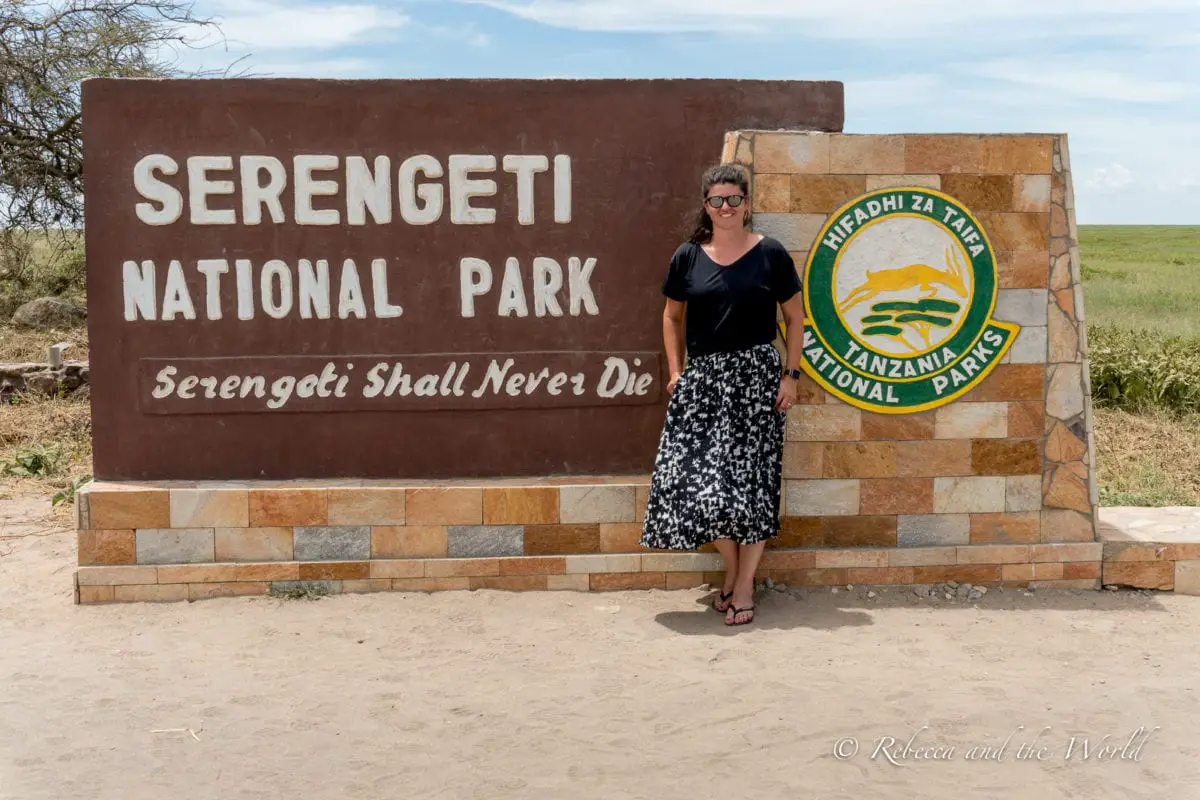
Shorts
I packed one pair of paperbag-waisted shorts for my trip, and only wore them once when I was at the beach in Zanzibar (but I’m not a big shorts wearer anyway).
I also packed a pair of bike shorts to wear under my skirts. They were handy to stop chafing (aka the dreaded chub rub!). A definite must-have.
T-shirts and tops
I recommend packing a mix of t-shirts, tank tops (singlets) and sleeveless shirts, in a variety of colours (preferably lighter colours), as well as long-sleeved tops:
- 3-5 t-shirts, tank tops and sleeveless shirts – consider merino wool t-shirts because they won’t smell even after wearing them for days!
- 1 long-sleeved knit top or cardigan to wear in the cooler evenings – these merino wool tops are fabulous because they’re breathable and warm
- 1 long-sleeved sweater or button-up shirt for layering on cold mornings or while hiking
I took more tops than this and really didn’t need to! Don’t be like me – keep your safari packing list simple!
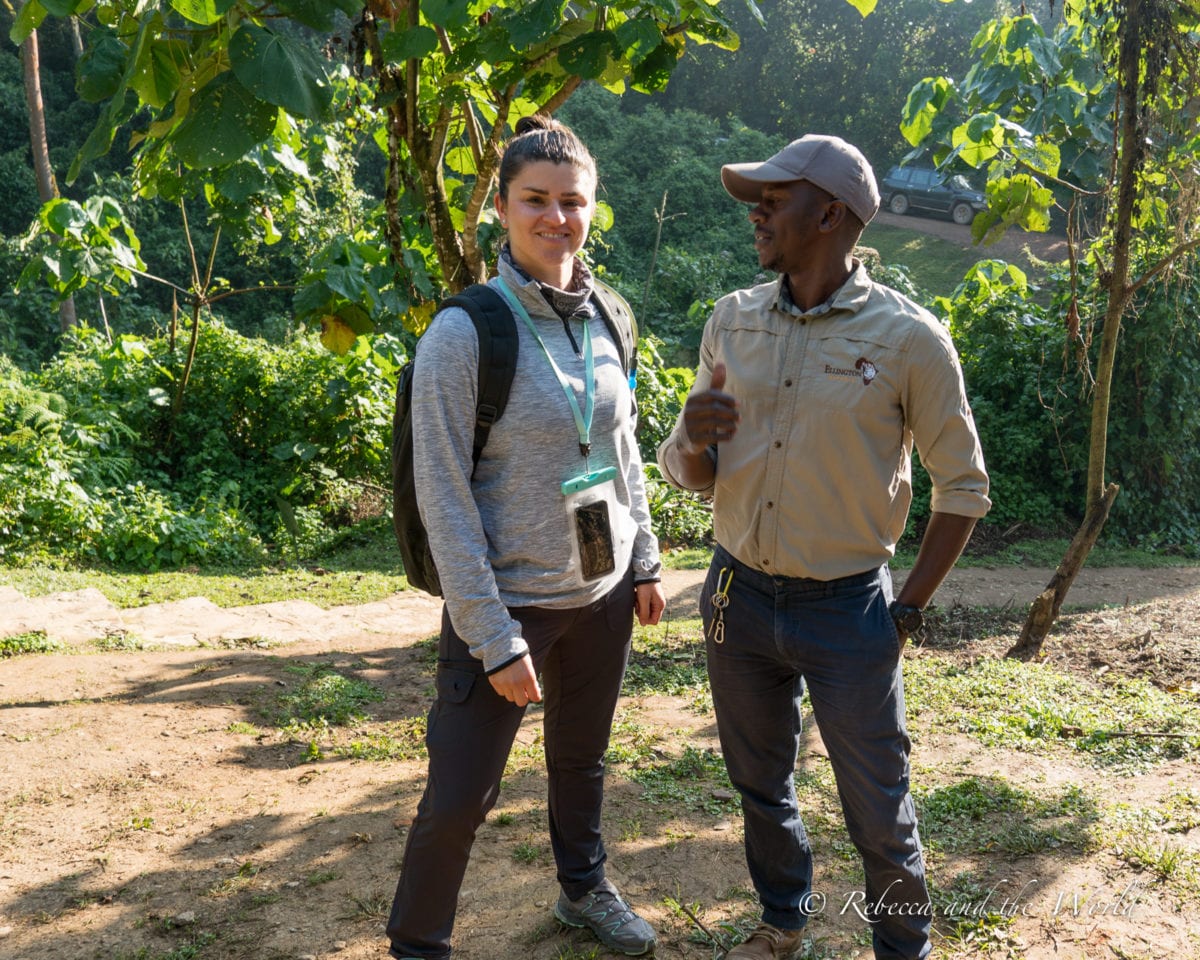
Jackets
Along with your lightweight long-sleeve tops, consider packing an additional jacket for layering. I packed a denim jacket, which made me feel a bit more stylish when I was in cities. I actually rarely wore it.
However, despite what you may think, East Africa does get cold, so pack the right number of jackets for the season and region you’re visiting.
Whatever the season, this lightweight rain jacket is essential all year round.
Shoes
I thought really hard about the shoes I brought with me – I wanted to minimise the number because they’re usually the heaviest things to carry.
In the end, I packed:
- These waterproof hiking boots that I wore on the gorilla trekking and during my 3-day Tanzania hike. If you’re not doing much hiking, you could swap these out for something that you could also wear during the day while on safari.
- Sneakers – I brought a pair of white leather sneakers. These may not seem to be the most appropriate colour to pack, but because they were leather I could wipe them down each night and keep them (relatively) clean.
- Sandals (or flip flops) – great to wear at night time and around beach areas, as well as in the safari vehicle. These Teva sandals are comfortable, hardy and look cute.
Other clothes on my East Africa packing list
Once you’ve got your bottoms, tops and shoes sorted on your Africa safari packing list, make sure you pack:
- Pajama pants and top
- Bra x 2 (black and nude – or whatever colours work best with the tops you’ve packed)
- Sports bra if you’re doing any active stuff – and to keep your ladies happy on bumpy African roads!
- Underwear x 7 pairs
- Socks x 5 – mix of ankle socks and hiking socks
- Bikini / bathing suit
- Swimming cover up and/or sarong
- Scarf – Bring a couple to mix up your outfits. They’re also great for covering up in more modest places like Stone Town
- Bandana or a cute head scarf to keep your flyaways in place while you’re speeding along rutted roads
- Sunglasses
- Hat – a must to keep your face protected from the sun
- Buff or something to put over your mouth for dusty roads (a scarf could also do double duty for this)
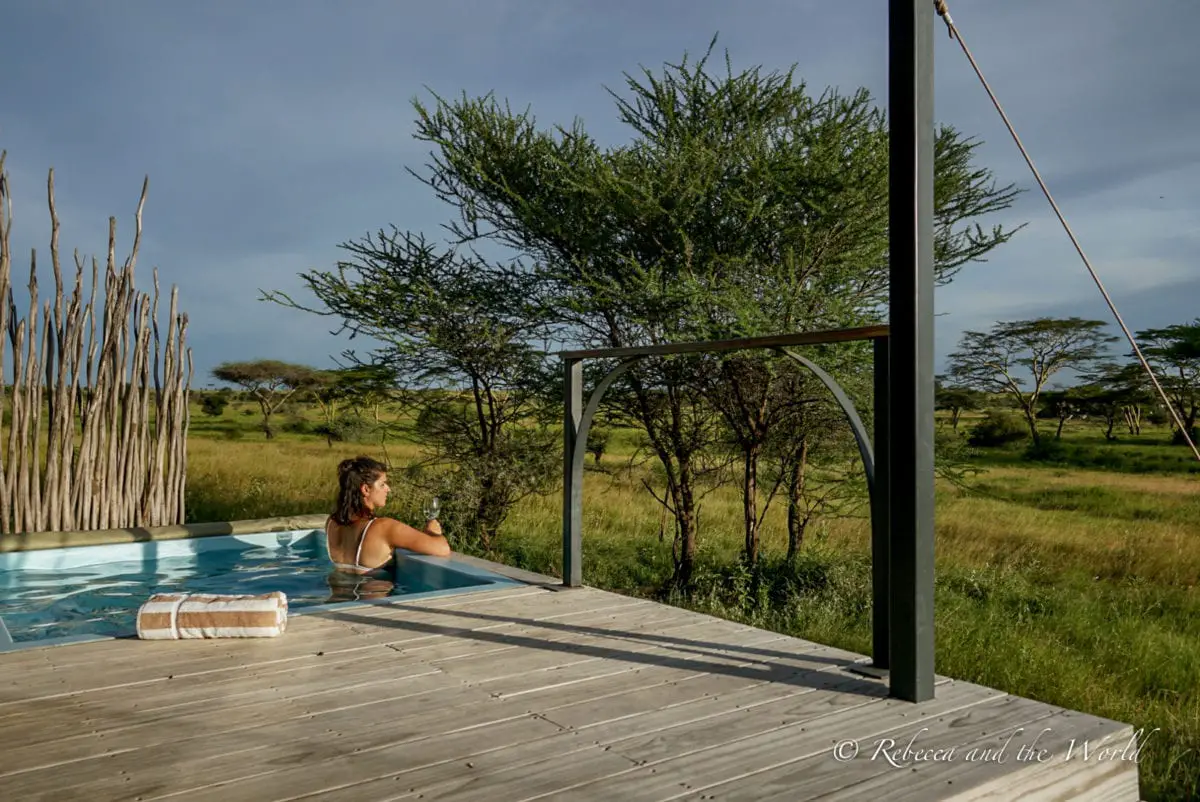
Travel gear for East Africa
Now we’ve gone through what to wear on safari (and beyond), here’s the other gear I packed to make my trip to East Africa comfortable.
Reusable water bottle – I always pack my Nomader water bottle which handily compresses down when it’s not full. I could fill up at hotels (many have filtration systems to treat water or buy bottled water in large bottles) or from the large, 10-litre water bottles that I asked my safari company in Uganda to buy.
I’ve been thinking of investing in a Grayl water bottle, which also filters the water so you can fill up from taps.
- ONEPRESS GLOBAL PROTECTION. Empowers international travelers and outdoor adventurers to make the world’s sketchiest water sources clean to drink. Ideal for global travel and outdoor adventures (hiking, camping, backpacking, fishing, hunting) and survival
- REMOVES ALL PATHOGENS. 99.9% of viruses (e.g. rotavirus, norovirus, hepatitis A), 99.9999% of bacteria (e.g. E. Coli, salmonella, dysentery), and 99.9% of protozoan cysts (e.g. giardia, cryptosporidium, amoebae)
- FILTERS particulates (e.g. sediment, microplastics) and adsorbs volatile organic compounds (VOCs), PFAS, chemicals, pesticides, herbicides, heavy metals, flavors and odors
Binoculars – I didn’t bring my own binoculars, because the safari companies I worked with carried a pair in their vehicles. However, these are going to be must-have things to take on safari for serious birdwatchers and wildlife lovers. A birdwatching friend recommends these binoculars for entry-level wildlife watching.
- Sophisticated rubber armored exterior design provides shock resistance and a firm comfortable grip
- Locking diopter control maintains your personal setting
- Oil/Water repellent coating – applied to both eyepiece and objective lens surfaces
- Nikon’s Legendary ED (Extra-low Dispersion)Glass Lenses
- Waterproof (up to 1m/3.3ft for 10 minutes) and nitrogen-purged for fog-free performance
Quick dry towel – I packed a quick dry towel but didn’t end up using it at all on the trip. All the lodges and camps I stayed at provided towels. If you’re backpacking in East Africa, however, this would be an essential item.
Head torch – An essential item for dark African nights! I used this when I was camping in Tanzania, but also had it next to my bed when I stayed in lodges and safari camps just in case the power went out.
Eye mask and ear plugs – Necessary for the long plane ride to East Africa (check out my other essential items in my long-haul flight packing list), and also handy for sleeping in places that may not have great curtains. I also downloaded a white noise app in Rwanda when a party across the lake kept going until 3 a.m.
Drybag – I packed a drybag to keep my camera safe while hiking. Luckily, I didn’t have to use it, but I was glad to have it just in case.
iPhone waterproof case – My iPhone waterproof case is great because it hangs around my neck. This means my phone is easily accessible while hiking, and it stays dry if there’s a sudden downpour.
Combination padlock – A combination padlock is handy if you need to leave your bags somewhere for a few days (like I did when I biked the Congo Nile Trail in Rwanda). Don’t pack a padlock that needs a key just in case you lose the key.
- TSA approved luggage lock enables screeners with the ability to inspect and relock luggage without damaging lock
- Set your own three-digit combination luggage lock; TSA lock is best used as a luggage lock or backpack lock
Bamboo cutlery set and metal straw – Another small item I always pack when I travel is my bamboo cutlery set and a metal straw. Although East Africa is quite progressive when it comes to single-use plastics, this is still a handy item to have.
Water bladder – While hiking, I much prefer to have a water bladder than a water bottle. I can easily slip the tube over my shoulder and drink to my heart’s content rather than having to stop, pull a bottle out of my backpack, drink and then put it back.
Travel pillow – A travel pillow is handy on a plane, and you’re also going to have some long days of driving. Avoid drooling all over your shoulder and waking up with neck cramps by packing a travel pillow like the TRTL pillow, which keeps your head upright as you nap in a seat.
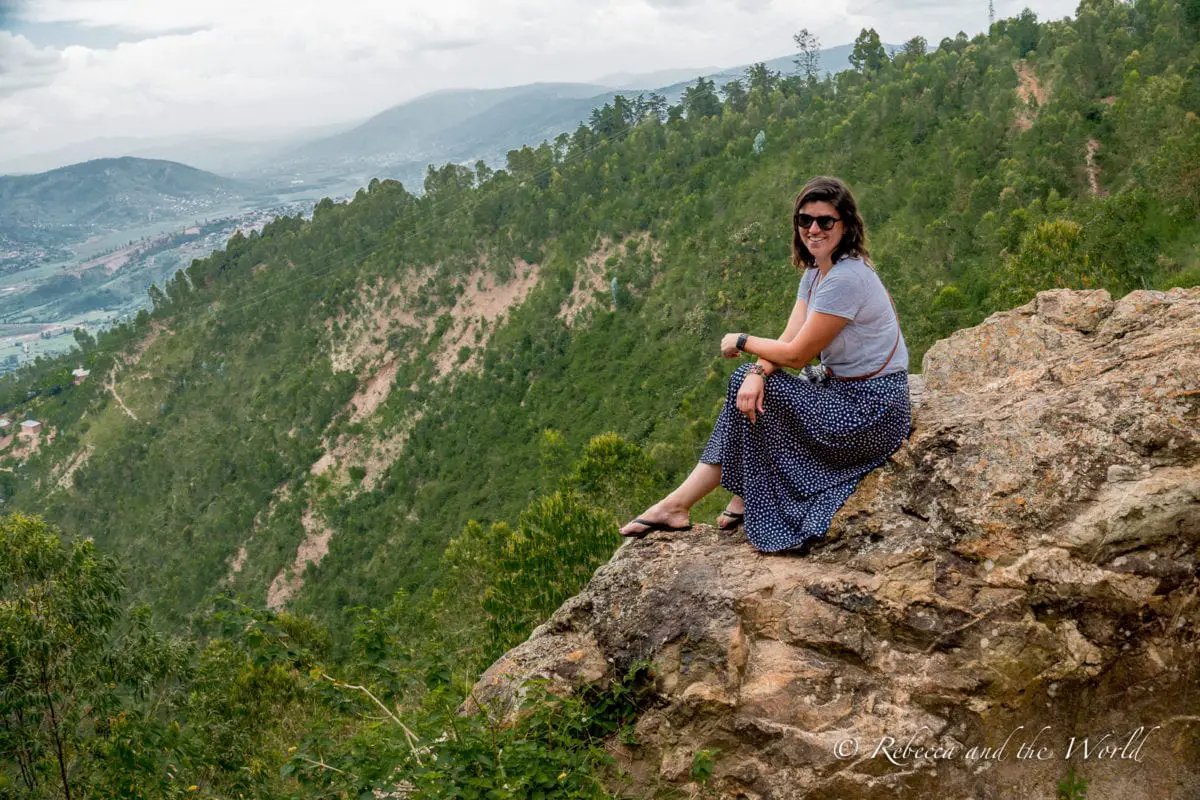
Technology
The technology you include in your East Africa packing list will likely be different to mine, but there are a few things I recommend packing even if you aren’t blogging along the way.
Power bank – I packed a power bank just in case my phone or camera ran out of juice while I was on the road. I was glad I did, because many of the camps and lodges I stayed in didn’t have charging stations in the room (because they’re on solar power). However, the safari vehicles did have charging ports which was also handy as a backup!
Adapter with multiple ports – The countries in East Africa have different plugs, so pack a multi-port adapter like this one to cover all bases.
e-Sim card – to stay in touch with people back home (note that Rwanda isn’t covered)
Kindle – I took my Kindle because I didn’t want to have to lug a handful of books with me on my trip. I had some books already downloaded, along with the Lonely Planet East Africa guidebook. Consider downloading some books that are about the countries you’re visiting. These are some of my favourites:
- Kenya – Unbowed by Wangari Maathai or Out of Africa by Isak Dinesen
- Tanzania – The Zanzibar Chest by Aidan Hartley
- Rwanda – We Wish to Inform You that Tomorrow We Will Be Killed with Our Families by Philip Gourevitch
- Uganda – Kintu by Jennifer Nansubuga Makumbi or Abyssinian Chronicles by Moses Isegawa
If you’re a photographer (or a blogger like me!), you’ll also be packing:
- A good camera (I took my Sony A6300 which I love because it’s so light)
- Lenses (I took two lenses, a 18-135mm and a 35mm, but I wish I’d also bought and packed something longer)
- Camera charger and extra batteries
- Lens cleaning kit because it gets dusty on the African roads
- A Gorillapod or a full tripod
- A gimbal if you’re planning to do some video
- Microphone for video
- Plenty of memory cards
- External hard drive so you can download your photos each night
- Laptop
Toiletries
I know everyone’s different when it comes to toiletries, so use this as a guide. I tried to pack the minimum (but despite my efforts my bag was still so heavy!).
- Shampoo and conditioner – I squeezed what I needed for the month into these small silicone bottles
- Dry shampoo
- Moisturiser (with SPF) – Make sure your face moisturiser also has sunscreen
- Sunscreen – Pack plenty of sunscreen – at least SPF50+ – as it’s expensive in East Africa
- Face wipes – It’s nice to wipe off the dust at the end of each day
- Lip balm
- Cotton buds
- Makeup – I took minimal makeup, just some eyebrow powder, mascara and highlighter
- Brush
- Hair ties and bobby pins
- Toothpaste, toothbrush, floss
- Deodorant
- Nail clippers/scissors + tweezers
- Razor
- Body wipes – Great for wiping off after hiking, camping or doing active outdoor activities where you’ll be sweating a lot
- Toilet paper – Snaffle some toilet paper when you arrive, or bring some travel tissues. It’ll come in handy if you need to stop at public toilets (although I found most of them to be quite clean and well stocked)
- Tampons or Diva Cup – If it’s that time of the month
- A SheWee to make peeing on safari a little easier
- Toiletry bag – Pack everything in a toiletry bag, and don’t forget a clear case for your liquids when you’re flying
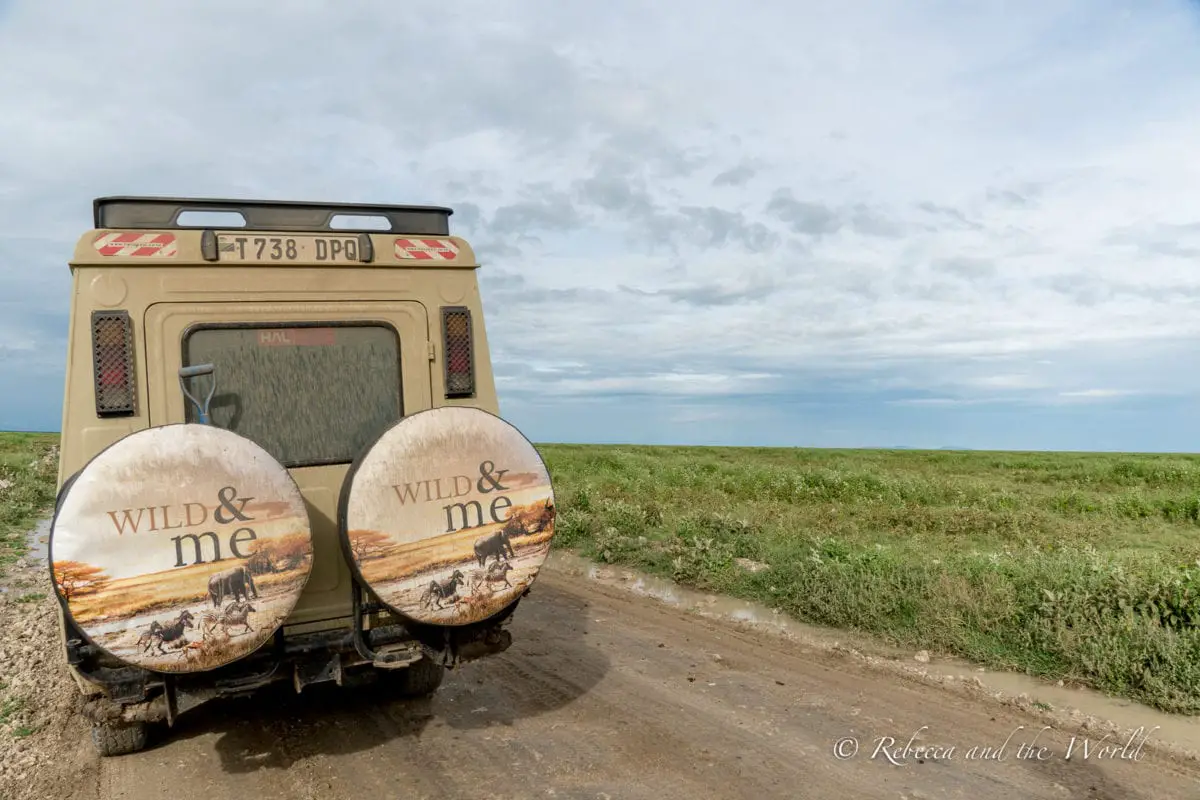
Medications and health items
You may find it harder to get medications while you’re in East Africa, especially outside of major cities. So, pack a good first aid kit with:
- Bandaids
- Imodium
- Pepto Bismal or activated charcoal
- Ibuprofen
- Hayfever tablets
- Antiseptic cream
- Antibiotics (get a prescription from your doctor)
- Eye drops
- Rehydration sachets if you’re hiking or doing activities that will exert you
- Antiseptic hand gel
- Mosquito/insect repellent
- Aquatabs (or a water filter bottle)
- Cold prevention tables / vitamin C – I was particularly petrified of getting a cold before I visited the gorillas, because if you’re sick you can’t go!
- Antibacterial wipes – Handy for wiping down seat and tray tables on planes
- Other medications you take on a regular basis (bring the prescription with you)
Documents and other items
Finally, here are the important documents you’ll need, along with a few miscellaneous items.
First up, you will NEED travel insurance. And always print out a copy of your policy certificate so you have the details easily at hand.
World Nomads offers simple and flexible travel insurance. SafetyWing is an excellent option for travel medical insurance when you’re out of your home country, while Travel Insurance Master can help you find the right insurance policy for your trip.
Other important docs and items to pack:
- Travel organiser – Great for keeping your passport and documents together in one place.
- Passport and extra passport photos for visas – Take a copy of your passport photo page and email it to yourself.
- Visa documents – Print out and keep safe any visa documents, including approval letters from governments.
- Yellow fever / vaccination records – Some countries in East Africa require you to have a yellow fever vaccination, so don’t forget to bring the record along with you.
- U.S. dollars – All countries in East Africa accept U.S. dollars. Indeed many hotels, airlines and other tourism businesses will quote you in USD.
- Notebook and pens – If you’re like me, you’ll want to record every aspect of your East Africa trip.
- Snacks – I brought along a variety of small snacks like nuts and bars. To be honest, though, the lodges and camps I stayed at fed me so much that I usually just ended up sharing my snacks with other people.
Wrap up: East Africa packing list
So, that’s everything I packed for East Africa! My key tips are avoid overpacking (learn from my mistake!) and pack lightweight clothes in light colours. You can look stylish while on safari and avoid the full khaki outfits and zip-off hiking pants.
I’ve included a lot of info in this article, so don’t forget that you can download this entire packing list in a simple list form in PDF.
Happy packing and enjoy your time in East Africa!
What to pack for East Africa: FAQ
Can I do laundry while travelling in East Africa?
Many accommodations offer laundry services, but it’s a good idea to bring a small supply of laundry detergent and a travel-sized clothesline for washing small items.
Is it necessary to bring a power adapter?
Yes, East Africa uses various plug types. A universal adapter like this one will ensure you can charge your devices everywhere you go.
Are there any items I should leave at home?
There’s no need to bring flashy jewellery and things that will attract attention. Also, leave your hair straightener and hair dryer at home – many lodges run on solar power and can’t support appliances like these.
Do I need malaria medication?
Consult a travel clinic for malaria prevention advice, as it varies by region and season. Insect repellent is something you should definitely pack to protect against mosquitoes.
Do I need any vaccinations before traveling to East Africa?
Yes, certain vaccinations are recommended. Check with your healthcare provider for the latest recommendations.
Did you find this article helpful? Consider buying me a coffee as a way to say thanks!
What else would you add to this East Africa packing list? Help other travellers by leaving a comment below.
Related posts
Before you go… these posts might be of interest:
- A Unique 2-Week Tanzania Itinerary: Adventure, Safaris and Beaches
- A Wildlife-Packed Uganda Itinerary: One Week in the Pearl of Africa
- Gorilla Trekking in Uganda and Rwanda: What You Need to Know
EAST AFRICA PACKING LIST: PIN IT FOR LATER
Save this guide to what to wear in East Africa to Pinterest so you can plan your own packing list later.
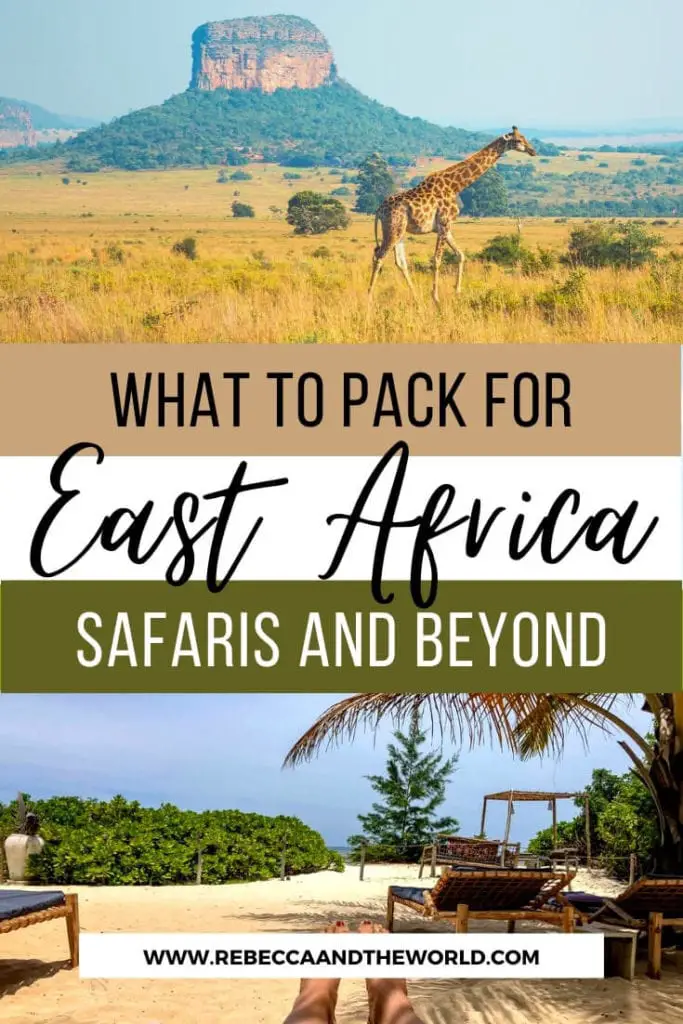
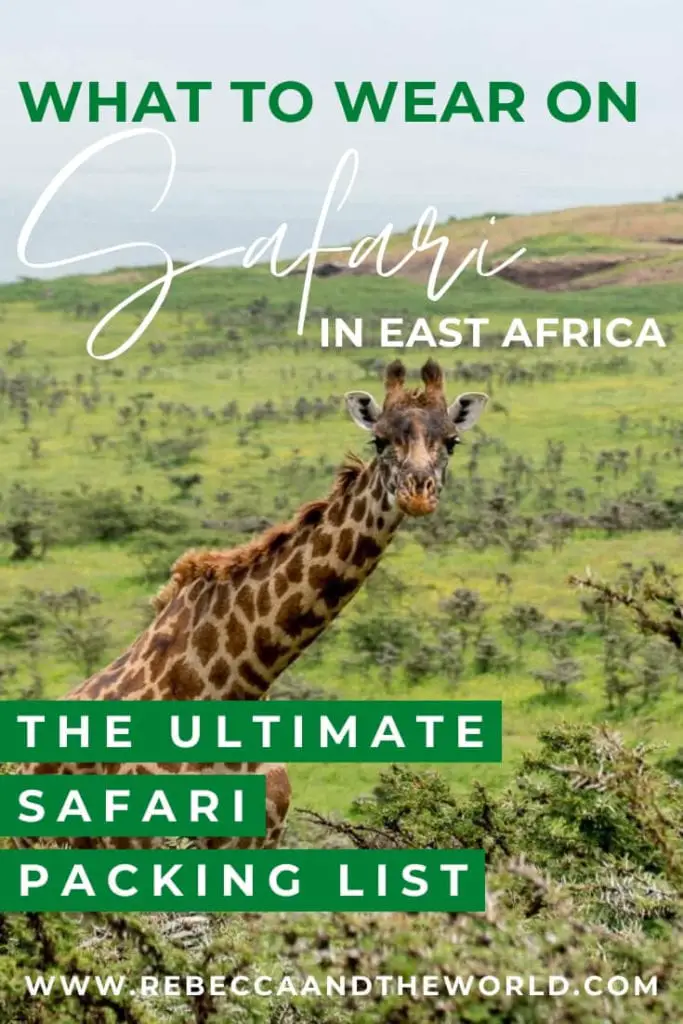
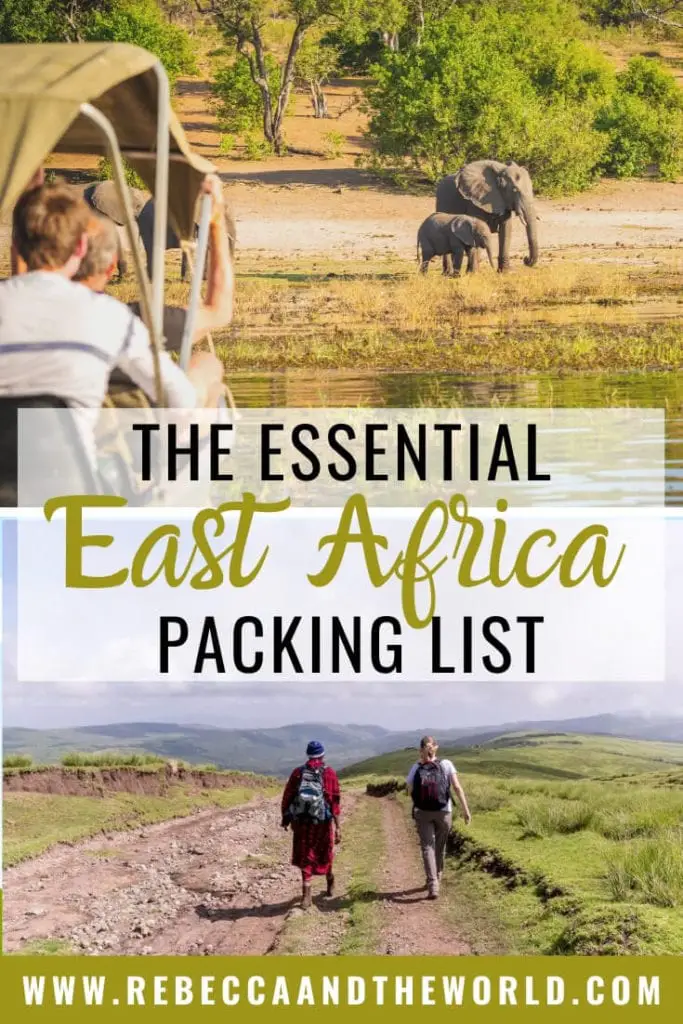










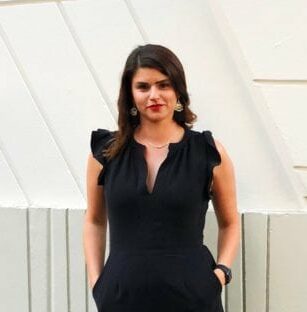

hi i see you are wearing black i thought it wasn’t recommended
Hi Jane, I took one black t-shirt (as seen in the pic) but most of my tops were grey or lighter colours (eg. pink or khaki – as you can also see in other photos). Black definitely isn’t recommended but I didn’t have any issues with tsetse flies or similar on the days that I did wear black.
Hi Rebecca. I am leaving in Sept for Rwanda and East Africa. Did you take the 28″ or 32″ bag? Your list is FANtastic! Thank you so much. We are going for a month. So much to take even if thoughtfully packing. Appreciate your feedbaci.
Oh have the most amazing time!! I think I took a bag that was more on the 32″ size… key is to make sure it’s not over the weight limit if you are taking any internal flights on small aircraft.
Fantastic list! And I really appreciated the insight about what you brought and what you really used/needed/wished you had brought or left behind. Thank you for such a thorough and helpful list!
Glad it helped! It’s confusing to know what you do and don’t need on a safari trip!